
Powerful
EKKcapcast calculates a wide range of data using advanced techniques and powerful solvers. A complete data set assures you have everything you need to get your casting right the first time.
• Fill Time Prediction
• Cold Shuts
• Riser Sizing & Placement
• Tilt Pour
• Complete Cooling Control
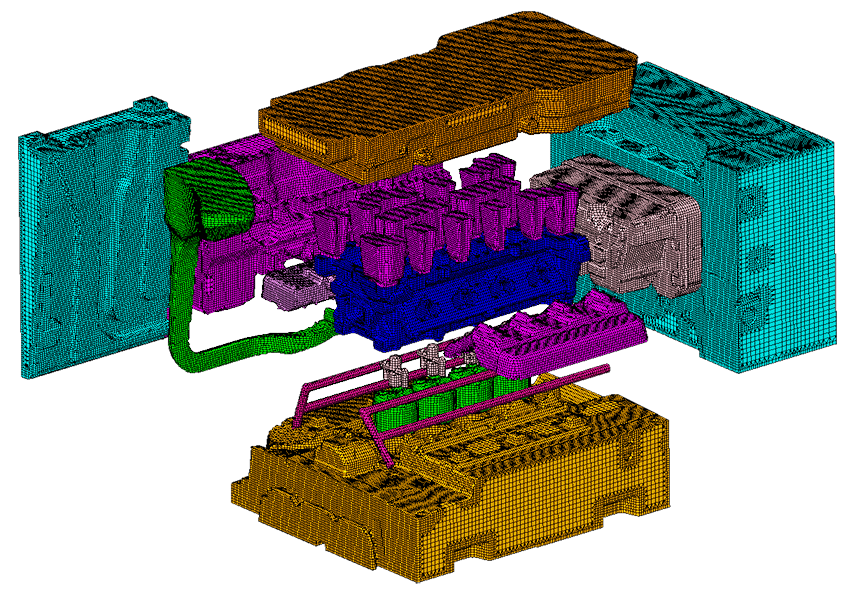

Accuracy
The high quality FEM meshes produced by EKKcapcast, coupled with its powerful simulation solvers, result in unprecedented levels of accuracy. Filters —commonly included in gravity castings— in addition to regulating metal quality can dramatically impact flow patterns and thereby trapped air. Simulation results are consistently verified by real world castings.
No Filter
20mm 30 PPI Filter
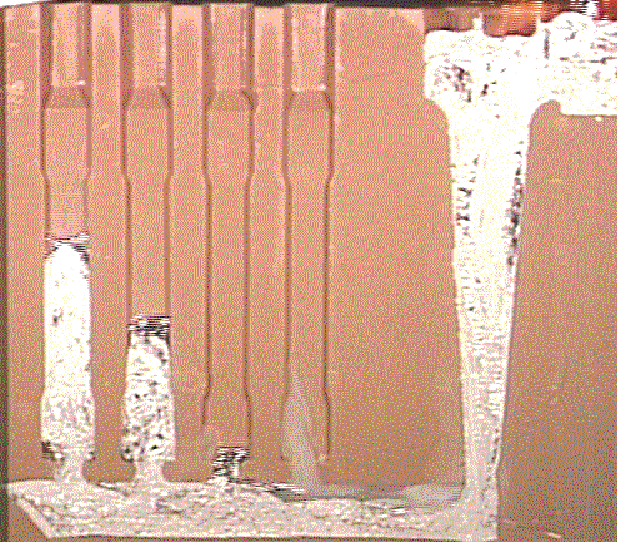
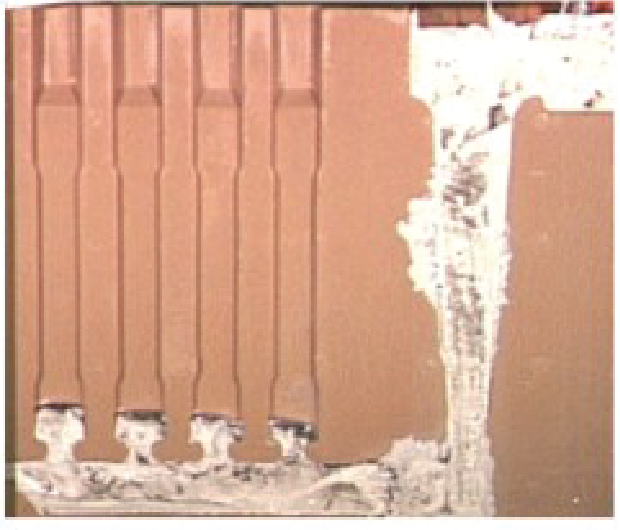
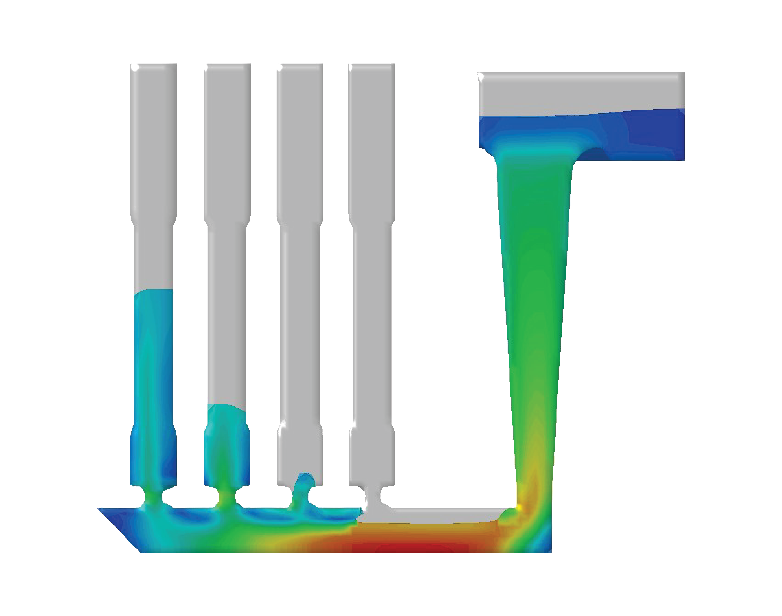

J. Bäckman et.al., “Influence of filter on the mould filling of aluminium melts in vacuum-sealed moulds”, Jönköping University, Sweden, 1999

Mis-Runs
Properties such as the changing viscosity of an alloy as it cools can be modeled, thereby directly and visually predicting mis-runs. Simulation results are consistently verified by real world castings.
| Temperature °C | |
|---|---|
| Left Gate | Right Gate |
| 750 | 700 |
| 750 | 670 |
| 750 | 650 |
| 750 | 630 |

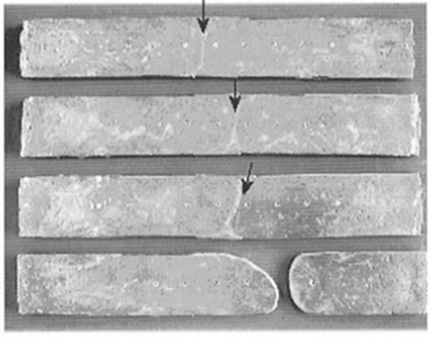
S.Kashiwaki et.al., J. JFS, Vol. 78, No. 5 (2006), pp.245~251


Fluid Flow
In-depth visual analysis of fluid flow patterns and various fluid properties throughout filling is possible. Determine where issues may arise due to insufficient fluid velocities, temperatures, patterns, and more.

Tilt
Dynamically modeling the motion of the part during flow allows for accurate predictions of defects arising from the flow pattern in the Tilt process.


Particles
Particles can be modeled during flow for a number of purposes such as gate mapping and defect location prediction. As demonstrated below, particle density is even considered.


More Buoyant
Less Buoyant


Heat Transfer
EKKcapcast’s thermal analysis module simulates every stage of the casting process to replicate real-world results. Zero-thickness interface elements connect adjacent components to accurately model heat transfer between them. Independent control of time or temperature dependent cooling lines allows for complete synchronization of the system. The ability to analyze casting temperatures, solidification patterns, and thermal effects throughout the entire process is an indispensable tool.

Solidification & Porosity
Thermal results are used to predict hot-spot locations. Filling defects due to inadequate mold temperature, locations in the mold prone to soldering, as well as casting and mold thermal distortion are also generated. Likely locations for problematic porosity formation can be analyzed and predicted by the porosity module.
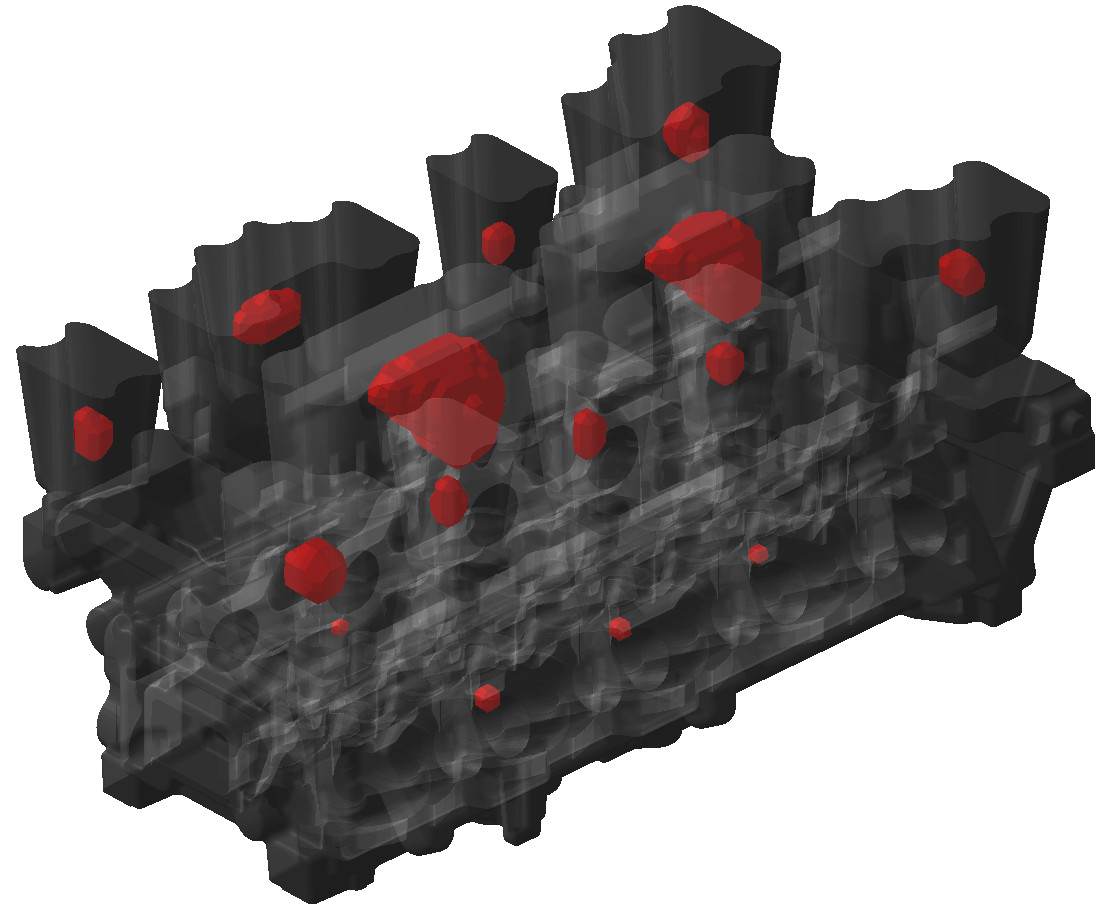


Stress & Deformation
Mold distorions must be considered for truly accurate thermal analysis. Castings falling out of tolerance, die life and fatigue, as well as cracking due to the existence of porosity can all be predicted with the use of the stress module. You won't even have to re-mesh as our FEM mesh is entirely compatible with Stress Analysis.

